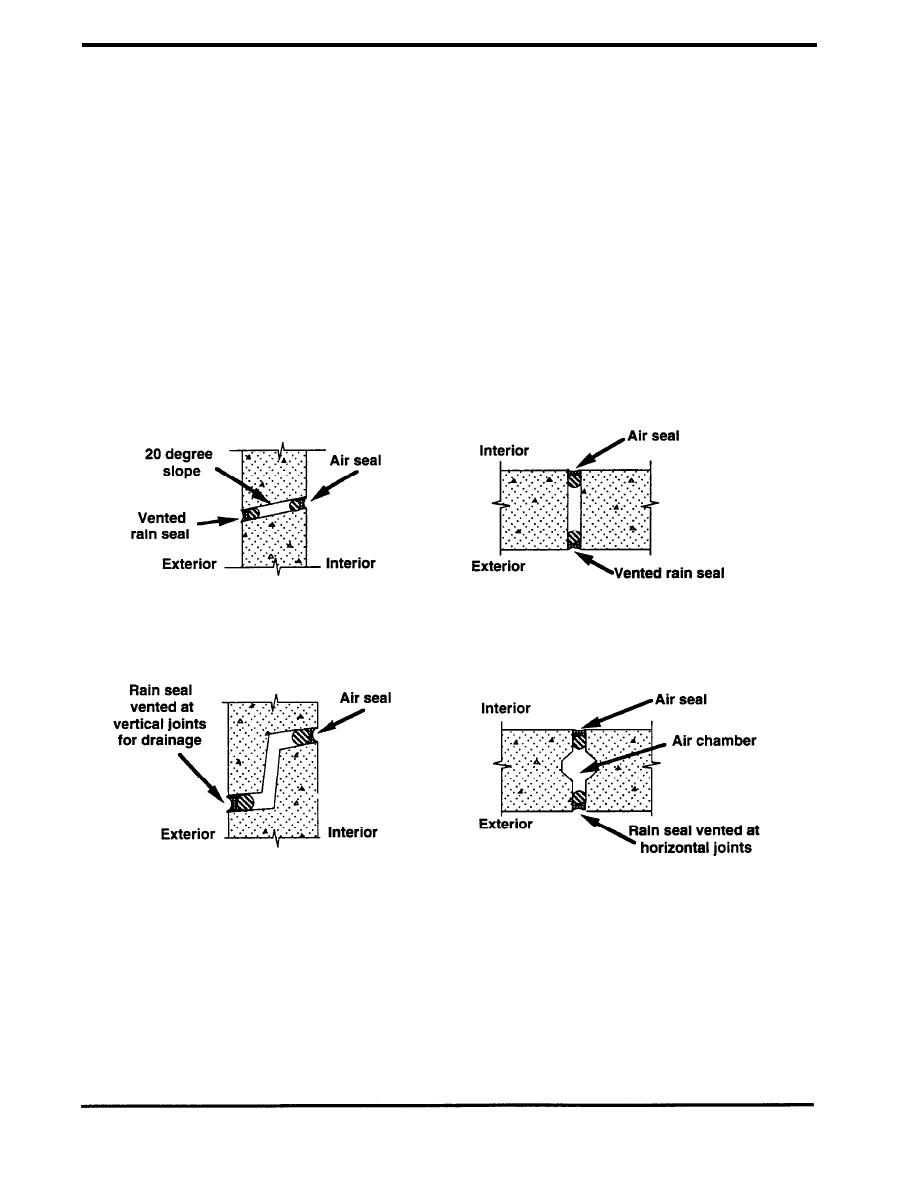
SYSTEMS/PRECAST
The two-stage joint approach can be used in a pressure-equalized rain screen joint design to further
improve performance. In this approach, vents are purposely provided in the rain seal and a
pressure equalization chamber is provided between the rain and air seals. The vents and the
chamber provide for rapid equalization of the outdoor air pressure and the chamber air pressure,
reducing the pressure-driven flow of water past the rain seal. Figure 4.4.4 shows two-stage,
pressure-equalized joints from Architectural Precast Concrete (PCI). For this joint system to work it
is important that any water that does penetrate the rain seal is drained to the outdoors and that
good air-tightness is achieved at the air seal. The higher initial cost of this approach as compared to
the face seal approach are balanced by the lower maintenance costs and better performance.
Achieving the desired performance requires careful design and construction, including intensive
supervision of the work since inspection of the completed installation is difficult. The most common
construction errors in this approach are not sealing the air seal completely and making the rain seal
airtight.
Section of Horizontal Joint
Plan of Vertical Joint
Plan of Vertical Joint
Section of Horizontal Joint
Figure 4.4.4 Precast Concrete Panel -
Two-Stage Pressure Equalized Joints (PCI)
PAGE 4.4-4



 Previous Page
Previous Page
